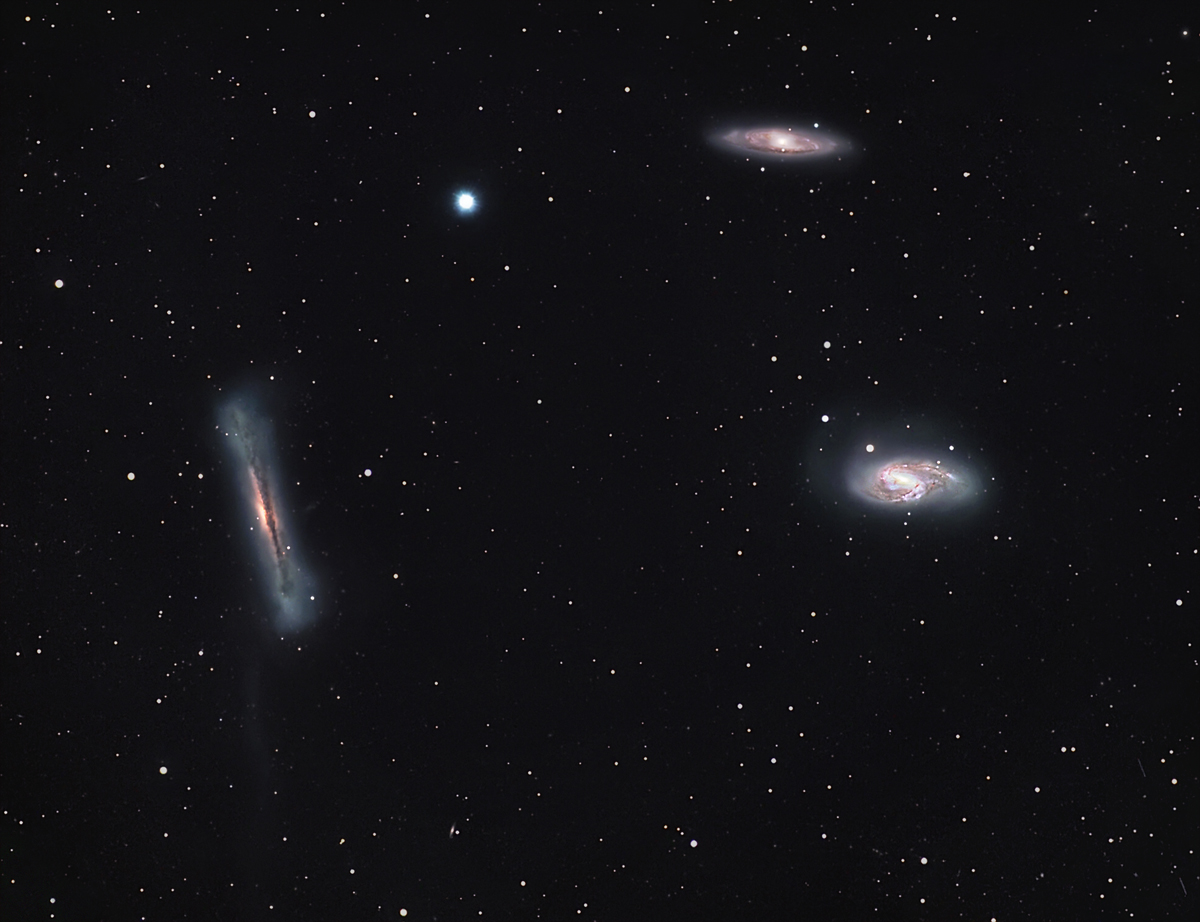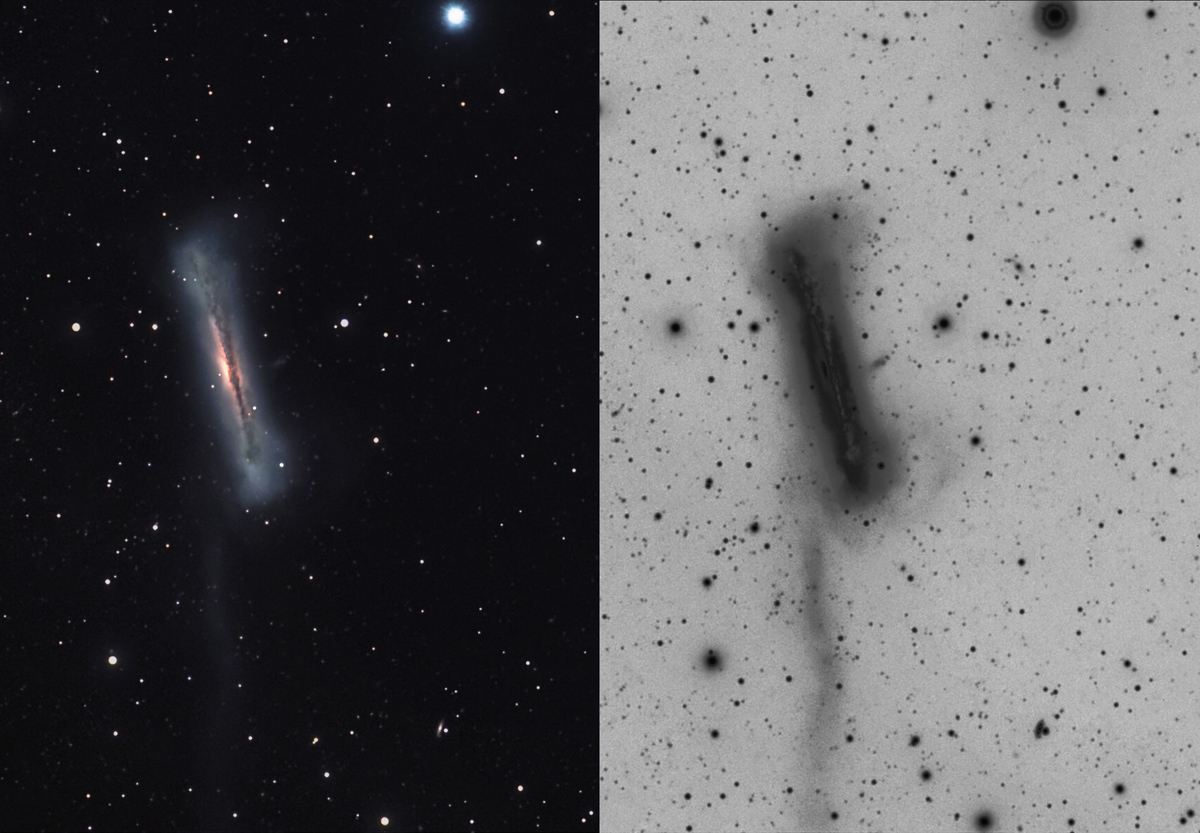
[back] M65, M66, NGC 3628 (Leo Triplett, wide field) in Leo[NED]

|
Type/distance: M65:SBa, ~17Mpc/56MLy, M66: SBb, ~9.9Mpc/32MLy, NGC 3628: Sb, ~11Mpc/38MLy, |
|
10' |
|
(c) 2005 All astro photo images are copyrighted. They may not be used or reproduced without explicit written permission from the authors.
About this Image / Über dieses Bild
| CCD: | SBIG ST10 XME |
| Image Type, Orientation: | LRGB Composite, North is at 9:00h |
| Exposure time: | L: 15x600 sec. 1x1 bin, R,G,B: 3x600 sec. 2x2 bin |
| Exposure date: | February 6th, 2005, starting at 22:45 UT |
| Location: | Much, Bergisches Land, Germany (235m above MSL) |
| Filter: | FR03 + Astronomik Typ II LRGB filters |
| Instrument: | Astro-Physics 105mm-Refractor Traveler, f=600mm (f6) |
| Photographer: | Stefan Binnewies |
| Remarks: |
The
three galaxies are the most impressive triplet at the sky. In contrast to
the Leo triplet a reasonable focal length for the triplet NGC 7582/90/99 in
Grus must be longer (see here).
The aim when photographing this image was to display the eastern tidal tail
of NGC 3682 (below NGC 3682 in the image). The tail appeared much dimmer
than expected, may be as a result of the not too fast focal ratio of the
used refractor (f6). The transparency of the sky was not optimal (5.7 mag
limiting magnitude in the zenit). Also unexpected was the number of minor
planets in the image. The two brightest can be seen easily in the image
above (17.0 and 17.1 mag). The same sky area, but exposured with our main telescope in primary focus at f=1800mm (two frame mosaic) can be found here. |
|
|
|
| Bemerkungen: |
Die drei Galaxien geben das eindrucksvollste Galaxientriplett des Himmels
ab. Das Triplett NGC 7582/90/99 im
Sternbild Grus benötigt deutlich mehr Brennweite um ein ähnlich
aufgelöstes Ergebnis zu bringen. Zweck der Aufnahme war die Darstellung des
Galaxienschweifs, östlich (nach unten) bei NGC 3628. Das Objekt kommt
unerwartet schwach, wahrscheinlich wegen des doch recht langsamen
Öffnungsverhältnisses des Refraktors. Auch war während der Aufnahme die
Transparenz nicht optimal (Grenzgröße 5,7mag im Zenit). Unerwartet auch die
Anzahl der mit abgebildeten Kleinplaneten. Zwei fallen schon im Bild oben
auf (unten rechts, 17,0 und 17,1mag hell). Da sich während der Aufnahme Eiskristalle auf dem Eintrittsfenster der CCD-Kamera bildeten, gab es Schwierigkeiten mit dem „glatten“ Bildhintergrund. Deshalb wurde auch nur ein Ausschnitt aus dem Originalbild bearbeitet. Der selbe Himmelsausschnitt, aber mit unserem Hauptinstrument im Primärfokus bei f=1800mm belichtet (Zweifach-Mosaik) ist hier zu finden. |

Back to the Galaxies' Overview / Zurück zur Galaxien-Übersichtsseite